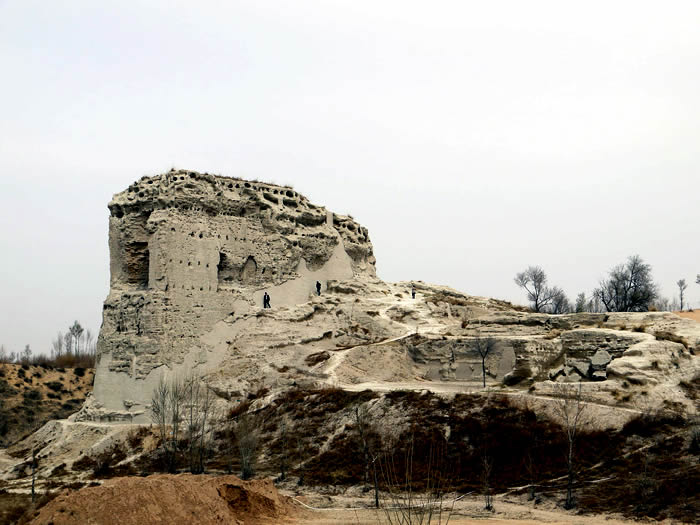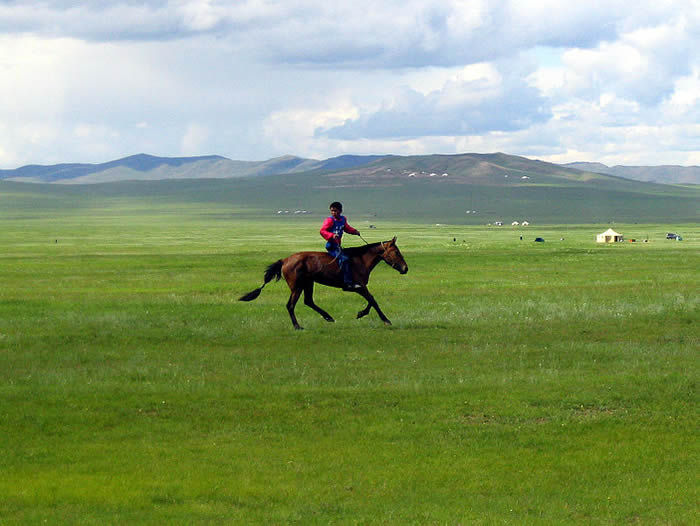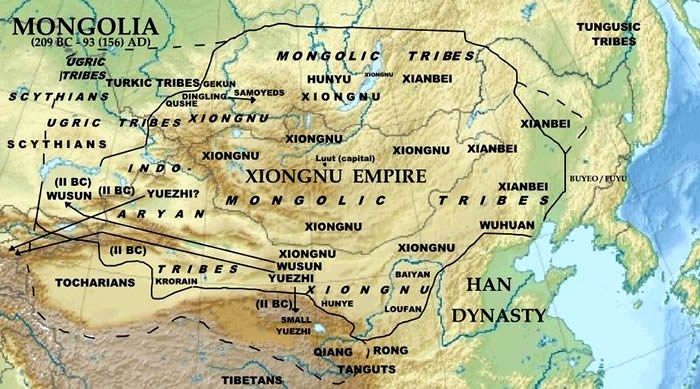 Xiongnu Empire
Xiongnu Empire

(Text by Duane R. Hurst © 2013)
Click on a link to view its information and pictures.
|
XIONGNU LINKS: Significant Event: Rise to Empire in 209 BC Main Cities: Abakan; Longcheng (Luut Hot); Tongwancheng Time: 209 BC - 93 AD Language: Xiongnu Personage: Modu Chanyu Religion: Animism; Shamanism Related Country: Mongolia |
|
|
Brief History: I have included only a few items concerning the history of this kingdom. A good source for more details can be found on Wikipedia or in history books. EARLY YEARS: At the end of 3rd century BC, Xiongnu nomads constructed towns in the Mongolian Steppes, including a capital at Luut Hot (City of Dragon). Typically, they dwelt in round tent-like Yurts. A Han Dynasty Chinese historian named Sima Qian included the Xiongnu in his "Records of the Grand Historian". Shang and Zhou dynasty China frequently battled with nomadic Xianyun ("long-snouted dog" aka Xiongnu) and Xirong ("warlike foreigners" from the Fen River area). Emperor Qin Shi Huang of the Qin Dynasty ordered general Meng Tian to seize the Ordos Loop from Xiongnu control in 215 BC. His success encouraged Xiongnu tribes to form a united confederacy. China built the Great Wall to keep invading hordes out, so it became a demarcation obstacle for the Xiongnu. EMPIRE UNDER MODU CHANYU: Modu Chanyu was a son of Touman, who sent Modu as a hostage to the Yuezhi. Touman soon after attacked and hoped the Yuezhi would kill Modu. However, he escaped and later ordered loyal followers to kill his father in an arrow barrage. Modu united the Xiongnu tribes into an empire in 209 BC. His forces conquered the Dingling people of southern Siberia, along the Lena River. Other subjugated nomads included the Donghu of east Mongolia and Yuezhi. Modu's troops nearly toppled Han emperor Gaozu at the battle of Baideng in 200 BC. He narrowly escaped an ambush by 300,000 Xiongnu horsemen. Modu died in 174 BC. Subsequent Xiongnu leaders adopted a marriage-treaty system. The Chinese married princesses to Xiongnu leaders and gave rich gifts to halt border incursions. Such renewable treaties lasted 60 years. In the autumn of 129 BC, Han general Wei Qing retook the Ordos Loop. In 121 BC, Han general Huo Qubing led light cavalry through the five Xiongnu "kingdoms" and forced the Hunye king to surrender, along with his 40,000 men. Xiongnu lost 80,000 to 90,000 men in the war; however, fewer than 30,000 of the 140,000 Han cavalry survived the desert and returned to China. EMPIRE DECLINE: Han successes under Protector General Ban Chao guaranteed control of the Silk Road. A contributing factor to collapse of the Xiongnu Empire was a civil war (60-53 BC) over succession after Chanyu died in 60 BC. Various brothers and their followers committed suicide or died in the protracted violence. Eventually, Chinese Eastern Han benefited from a schism that resulted in Northern and Southern Xiongnu. A Chinese army defeated Northern Xiongnu at the Battle of Ikh Bayan in 89 AD. Mongol Xianbei forces crushed and subjugated that Xiongnu kingdom in 155 AD. Southern Xiongnu relied on Han help until they rebelled in 94 AD. However, many Xiongnu served as auxiliaries to Chinese cavalry, such as under warlord Cao Cao in 216 AD. |
|
|
© Page Publisher: Duane R. Hurst
|


